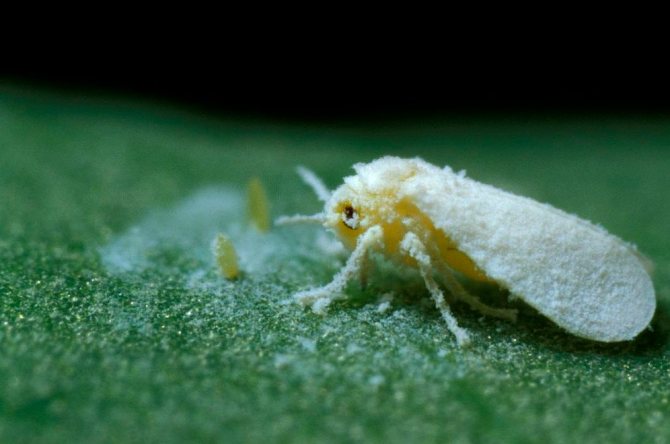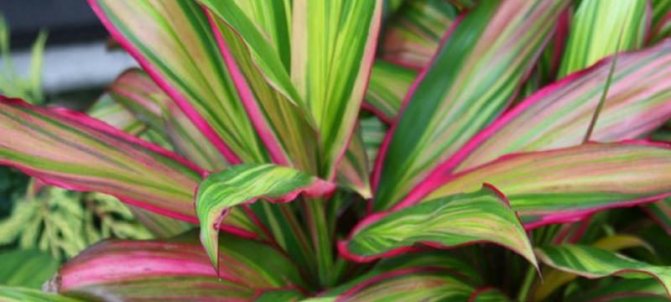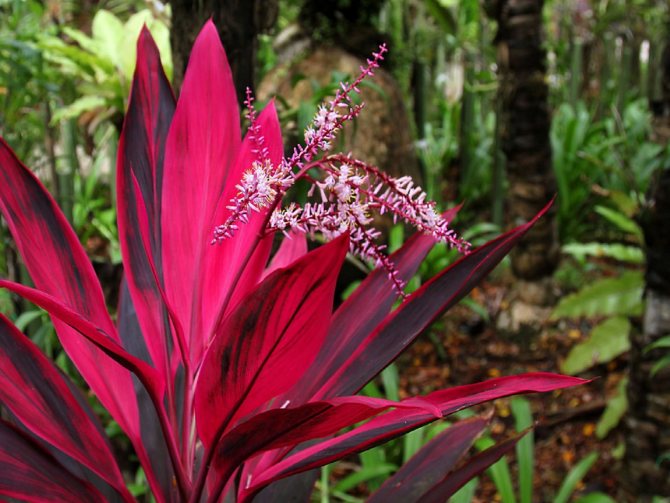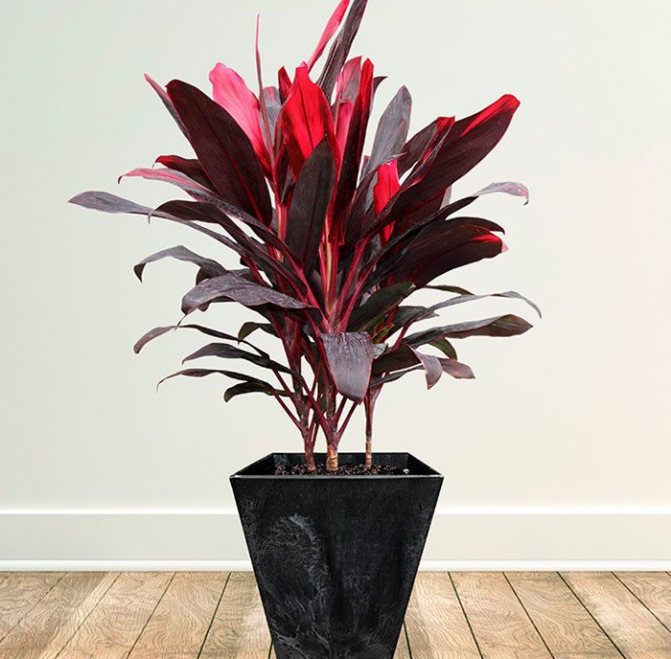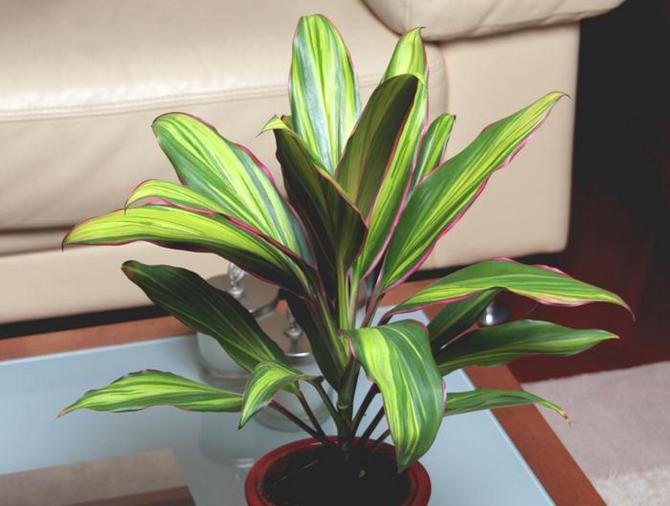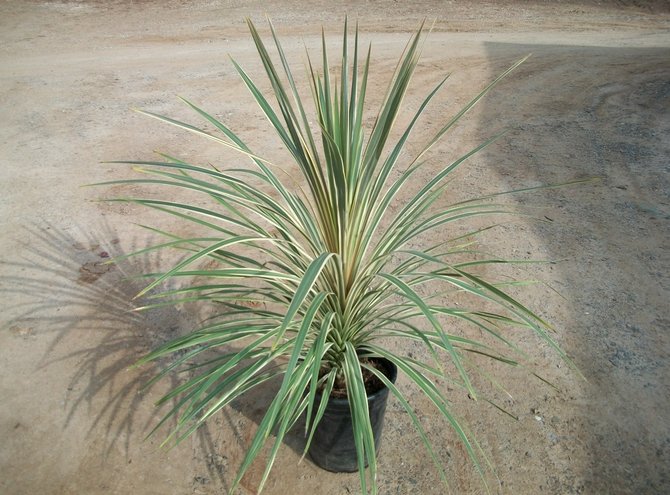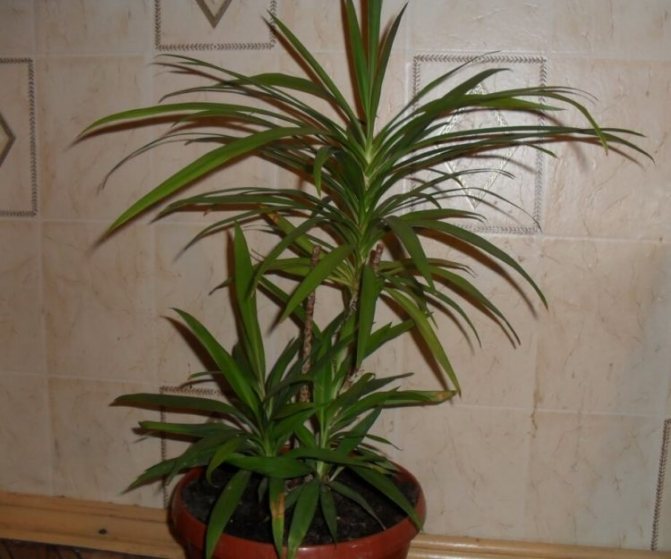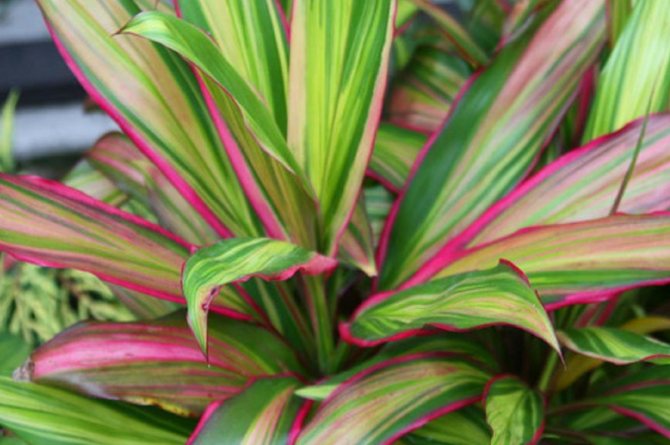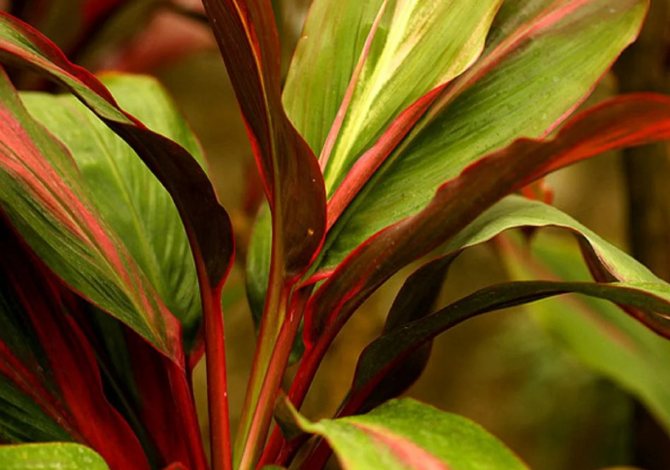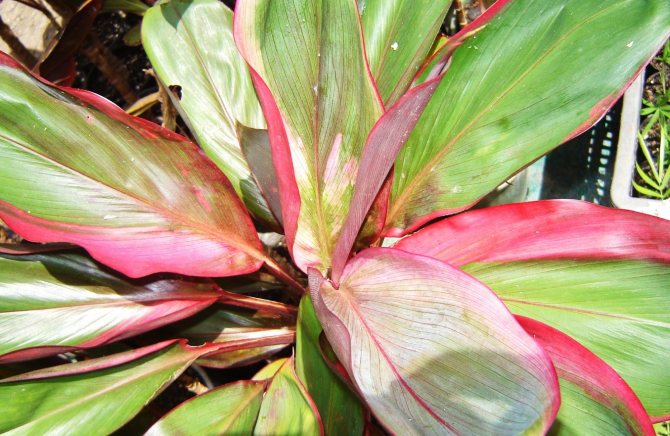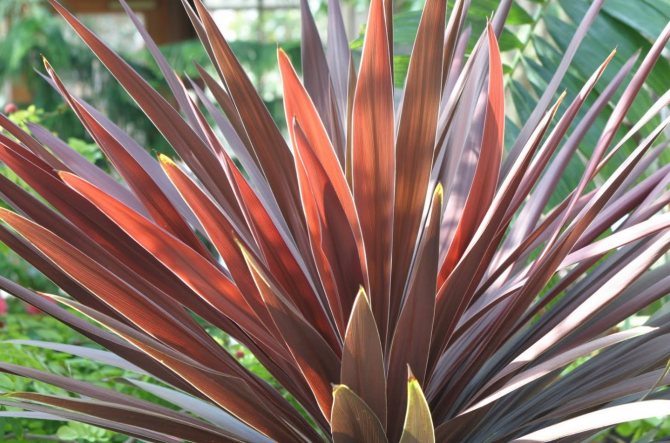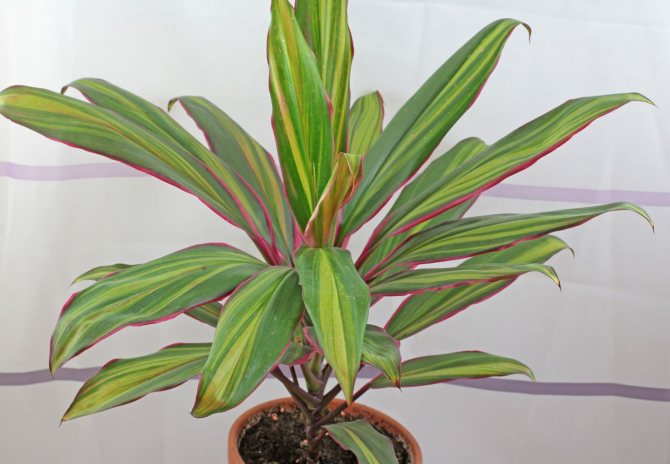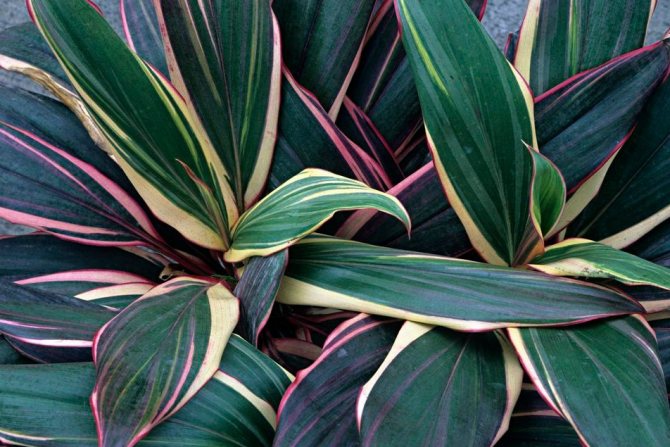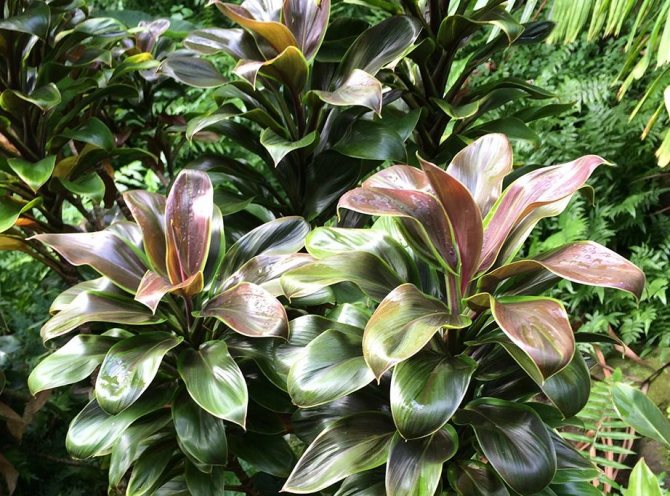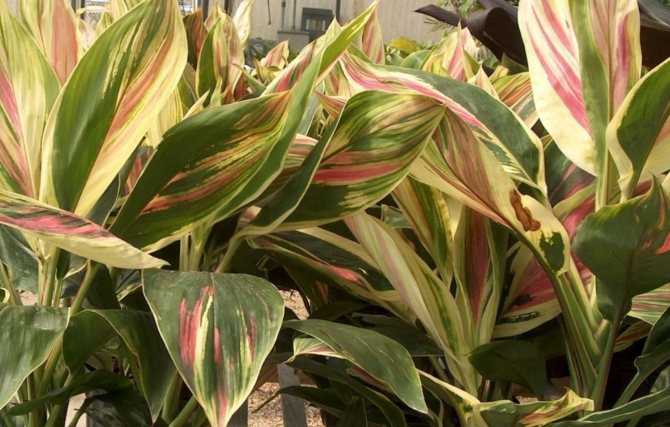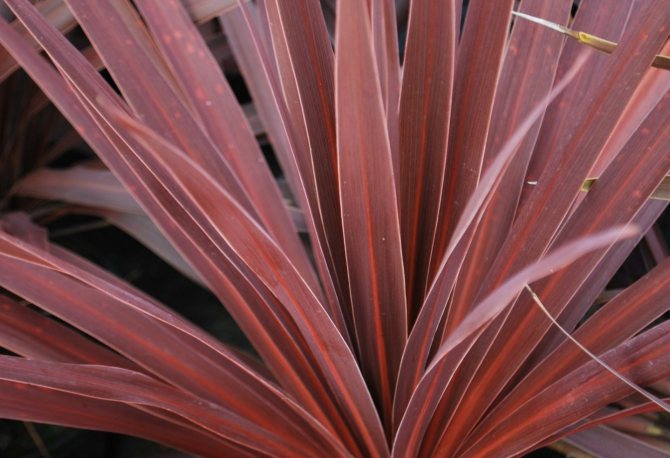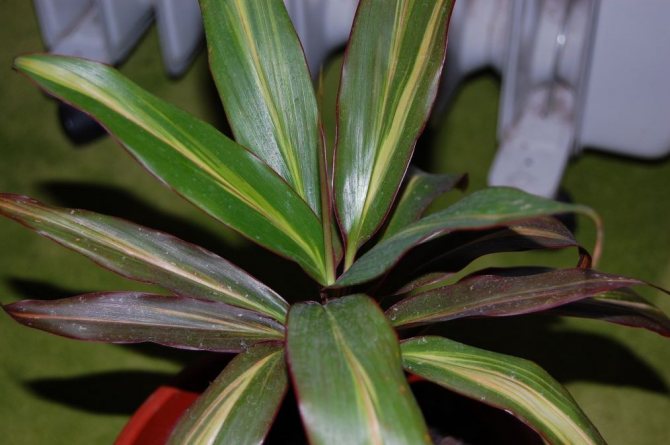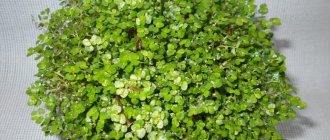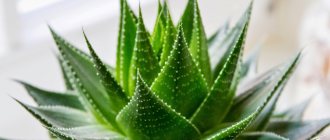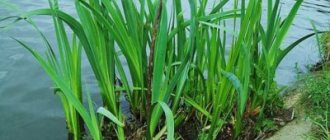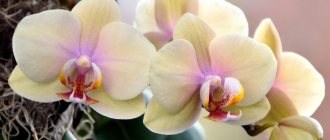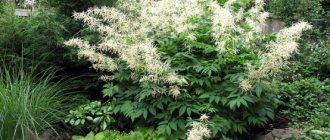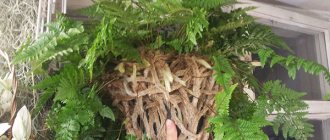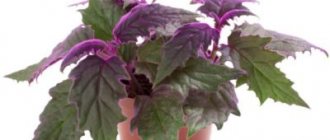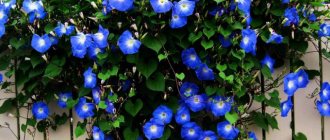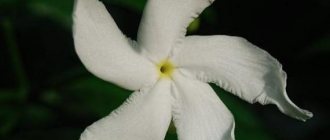Cordilina is a beautiful plant with decorative leaves belonging to the Agave family and to the category of false palms.
Homeland - tropical forests of Asia, Australian, African and American continents. Under natural conditions, the species reaches a height of 2 to 10 meters, and in a pot it rarely reaches 150 cm.
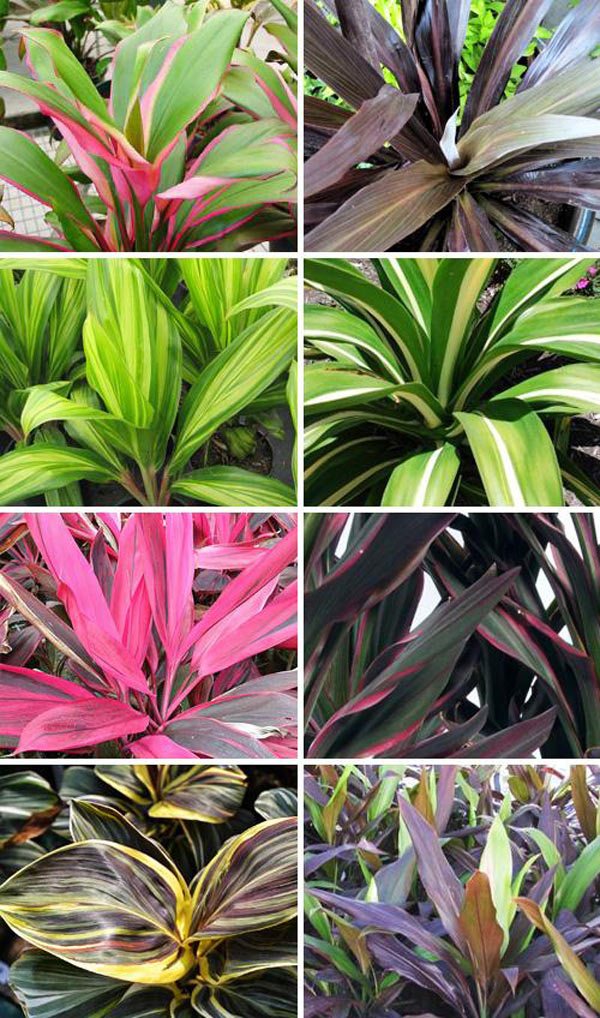
At home, the flower will live for a very long time, as long as it has enough space and light. Sometimes some types of cordilina are called dracaena.
Popular types of ornamental plants Cordilina: photos and names
There are 20 types of cordilina in the plant genus. Let's consider the most common ones.
Cordilina Banks
A natural species found in New Zealand. The plant is erect with a thin trunk. Pointed leaves reach 150 cm. The plant is unpretentious, quickly adapts to keeping conditions.
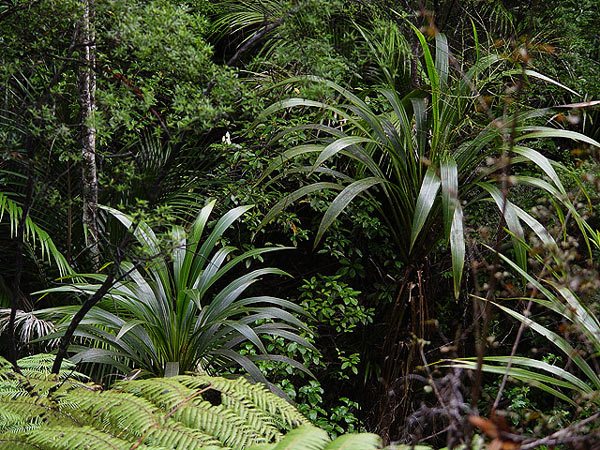

Southern cordilina
In its natural environment, it can be found in New Zealand and is a huge tree, thickened at the base. The leaves are thick, leathery, a meter long, with a light green vein in the middle. It blooms with white flowers, thinning a pleasant aroma. As an ornamental plant, garden forms are used, which are grown in winter gardens. When grown indoors, it is desirable to keep it cool.
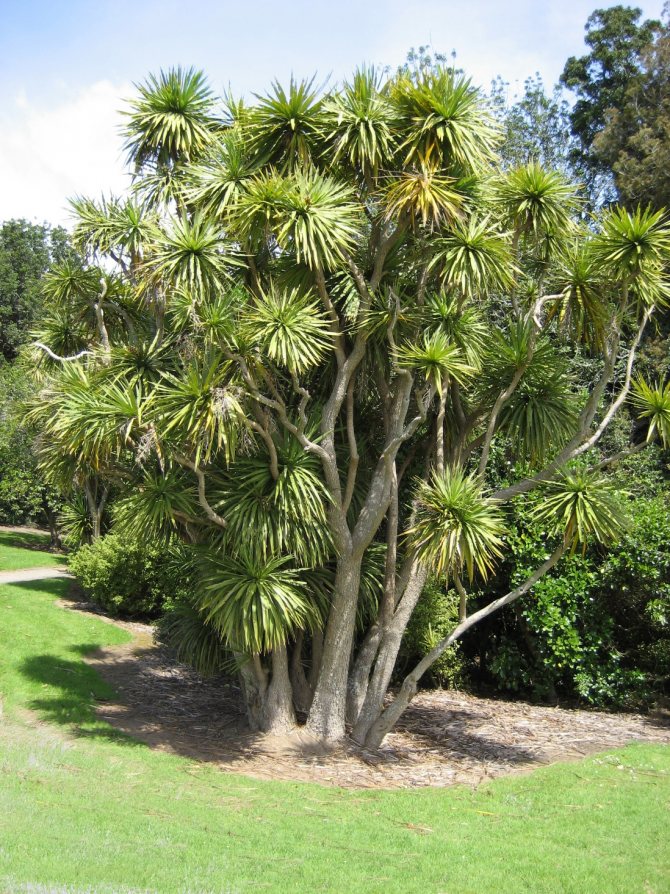

Cordilina undivided
She came to us from New Zealand. Matte green, belt-like, elongated leaves. A red vein runs right in the center. Coolness is required for cultivation.
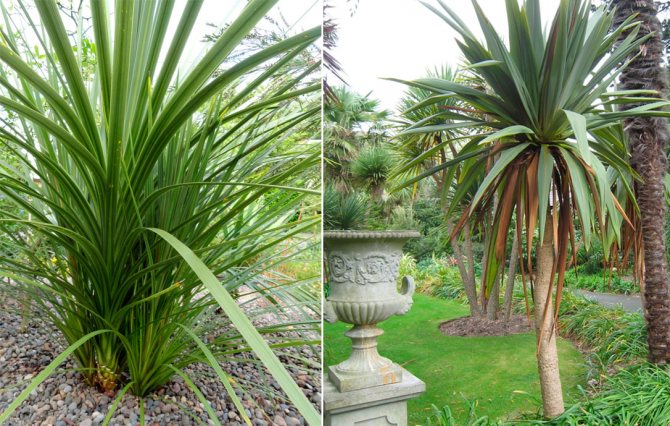

Cordyline indivisa
Cordilina straight
Originally from the sub-tropics of Australia. The jagged foliage is colored green and reaches 60 cm in length. The species prefers coolness.
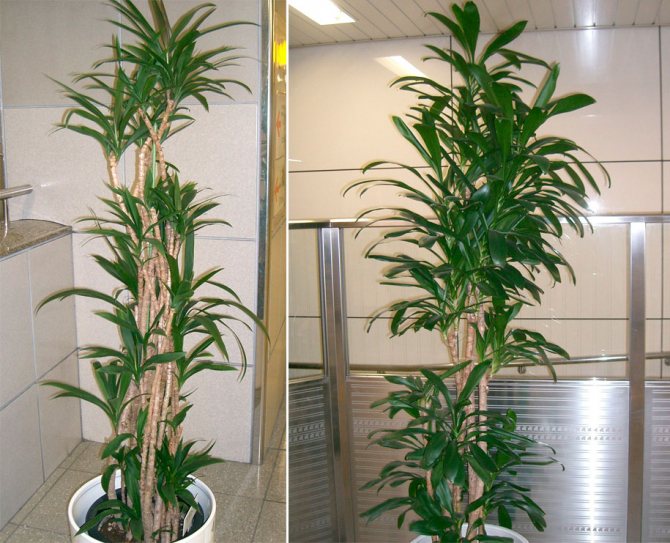

A selection of other popular varieties of cordilina with a photo:
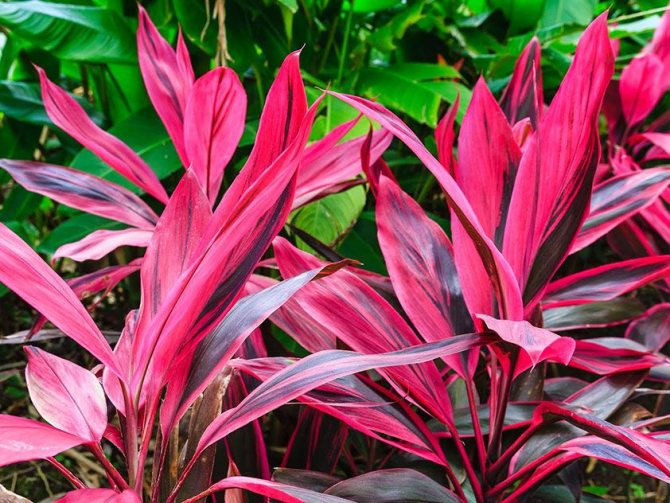

Cordyline terminalis
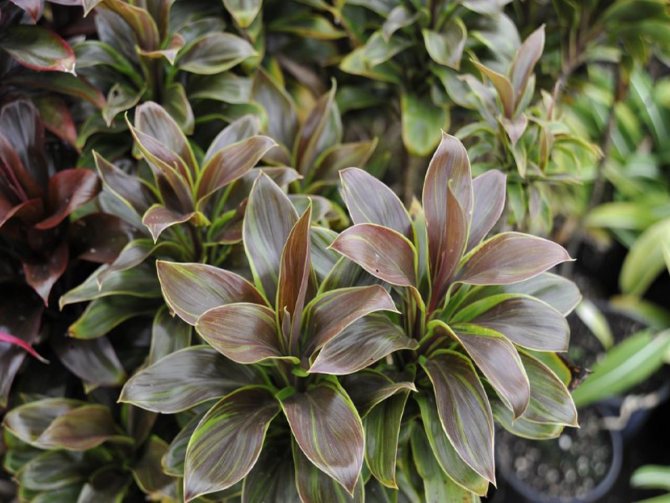

Cordyline fruticosa
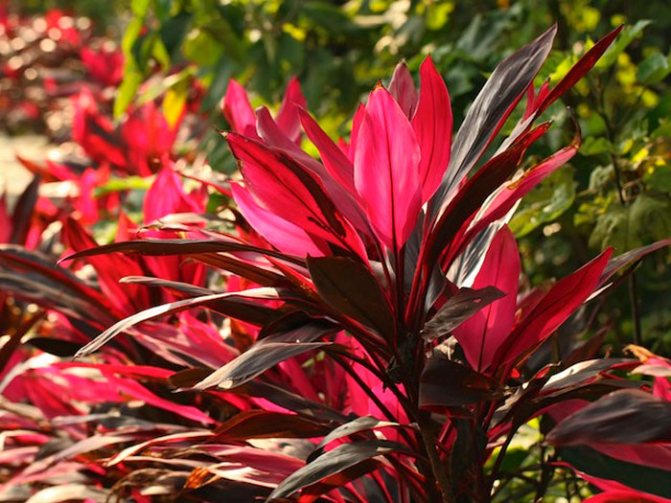

Cordyline rubra


Popular types of cordilini


Cordilina fruticose kiwi variety
general description
The straight cordilina really looks like a palm tree, especially when the lower leaves begin to die off as the plant grows, exposing the trunk and leaving petioles on it.
Cordilina is large in size: it often grows up to two meters high and boasts elongated lanceolate leaves that sometimes grow up to half a meter long. Its roots are fleshy and creeping, and the leaves have jagged edges. Small flowers of cordilina are collected in paniculate inflorescences.
Choosing a place for landing and transfer
The best place for growing cordilina will be the western or eastern window sill. Can also be grown in a south-facing room, but away from the window.
Young specimens need an annual transplant, adults need to be transferred to a new pot as the roots of an earthen coma are entwined. The transplant is carried out only in early spring.
If cordilina is grown as a tub plant, it will be difficult to transplant. You can make it easier and every spring to remove the upper part of the soil and replace it with a new one.
Attention! To keep the plant growing, you will often need to loosen the soil to ensure the flow of air to the root system.
You need to transplant into loose and nutritious soil. In the store, you can buy a universal primer with a slightly acidic reaction.
To prepare the mixture at home, you will need to take equal amounts of coarse river sand, high moor peat, leafy soil and humus. After mixing the components into the soil, it is recommended to add charcoal (in pieces) and broken crumbs. The components will prevent souring of the soil and make it more breathable.
Small plants are planted in plastic pots; larger plants are best grown in stable containers, such as clay pots.
When transplanting, it is important to choose a pot that is 2 cm larger than the previous one.
On a note! If you transplant cordilina into a pot that is too spacious, she will be carried away by building up the root system, which will affect growth retardation, weak build-up of green mass.
Seasonal conditions
By maintaining certain conditions, you will help the plant adapt to the atmosphere of the room and show itself in all its glory.
Growing this plant is not up to everyone. But if you have at least a little experience in caring for indoor flowers, then you will definitely cope with cordilina.
With proper care, even at home, you can bring the plant to bloom. However, some owners may be disappointed, because in this case one of the main rules of nature applies: the brighter the leaves, the more plain the flowers can be. In this plant, they are small, usually yellow or pink, collected in the so-called panicles. At the end of the flowering process, they must be removed without fail, so that the cordilina can continue to develop its foliage.
Home care
Proper care consists in providing the plant with sufficient light, regularly watering and loosening the soil, treating pests and for prevention, and fertilizing the root of the cordilina.
Illumination
The plant needs bright sunlight diffused lighting. Dark-leaved varieties can be grown in partial shade, they are not demanding on the level of illumination. All other species can be grown on all windowsills, except for the southern one.
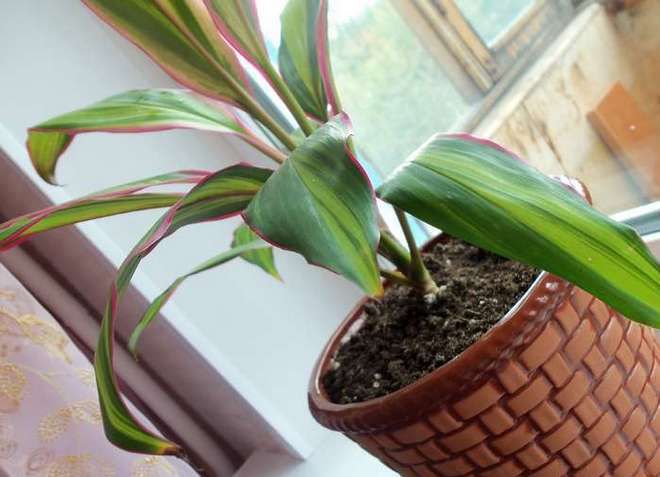

The plant loves bright sunlight diffused lighting.
Temperature regime
The optimum air temperature in the house should be maintained within + 22 ° C. Subtropical species need a high temperature in summer, but cool in winter, the thermometer should drop to + 5 ° C. Winter maintenance of tropical species should take place while maintaining the temperature at + 18 ° C.
Watering
During the period of active growth, watering should be regular, as the earthy coma dries out. In winter, you need to adjust the amount of watering in order to prevent waterlogging of the soil. When kept in a cool room, excessive watering is detrimental to the plant. The water must be settled.
Spraying
Hot air emanating from heating devices has a detrimental effect on cordiline. Tropical species need daily spraying, but the foliage of subtropical species does not need frequent spraying, it will be enough to moisten it once every 7 days.
Attention! During moistening, care must be taken that water does not fall on the growing point, otherwise the plant may die.
Fertilization
During the period of active growth of green mass, it is necessary to feed the plants with complex fertilizer every week, in winter, once a month.
Typical care mistakes
Improper care is fraught with various diseases. Consider the common mistakes in care made by inexperienced growers:
- if a beauty is placed in a draft, this becomes noticeable by its foliage: the tips and edges of the leaves acquire a brownish color unusual for them;
- brown foliage may indicate excessive dryness of the air, insufficient watering;
- if cordilina is grown in a constantly cool room, foliage becomes soft like rags, foliage curling is observed, brown spots of irregular shape spread over its surface;
- deficiency of nutrients also affects the loss of decorativeness: light spots appear on the leavesthat become dry over time;
- when exposed to direct rays of the sun, burns appear on the foliage - foliage constantly dries out;
- do not take any action if cordilina the lower leaves begin to fall, this is a natural process.
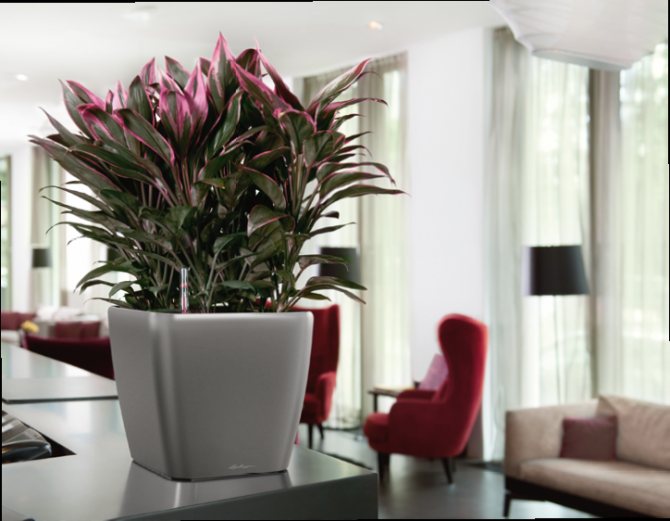

Excessive watering is detrimental to the plant, especially in combination with low temperatures. With proper care, you can get a gorgeous plant with painted foliage, which attracts attention with a riot of colors.
Plant care
Caring for room cordilina is simple, but it still requires certain skills. The plant needs to choose a bright room with a long daylight hours. However, it must be shaded from direct sunlight. Varieties with solid green foliage tolerate a lack of light better. It is optimal to place the flower in the southern room away from the window.
Summer air temperature in the room should be + 22… + 30 ° C. It is advisable to take the cordilina outside in the warm season. The place is chosen quiet, protected from drafts. In winter, the plant needs a cooler content. The air temperature is gradually reduced to + 12 ... + 14 ° C. Sharp night and winter cold snaps lead to plant diseases.
The humidity in the room where the flower is located should be high. The crown is sprayed with water twice a day, trays with water and wet pebbles are placed nearby. In winter, do not put the cordiline near heating appliances. If the humidity is insufficient, the cordilina will begin to dry and shed the leaves.
Cordilina is not too demanding for watering. Between irrigations, the earthen lump should dry out by half. Water the plant twice a week or less. Water is used well-settled and warm. Even a slight stagnation of water is detrimental to the plant, therefore it is important to ensure good drainage and timely drain the liquid from the sump.
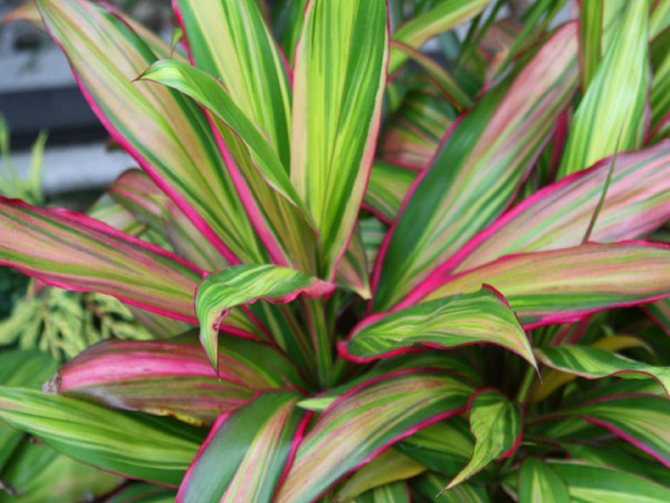

From the beginning of spring to the beginning of autumn, cordilina needs regular fertilization. Mineral complexes are used for indoor flowering plants. They are bred in water and applied twice a month.
Cordilina is resistant to plant diseases. The only problem with flooding soil is root rot. On succulent foliage, especially in dry and hot air, parasites (thrips, aphids, spider mites) often appear. At the first sign of insects, insecticide treatment should be carried out immediately.
Reproduction of cordilina
To obtain new specimens and to replenish the collection, the seed propagation method, cuttings and the separation of lateral shoots are used.
Seed propagation
It is important to know that with the seed method of reproduction, the seedlings do not repeat the maternal characteristics. This method is suitable for breeding new varieties and is used mainly by breeders or collectors.
Before sowing seeds, it is necessary to prepare the soil, which will consist of peat and sand in a 2: 1 ratio.
Sowing seeds is desirable in the spring. Seeds are placed in a prepared container with poured and tamped soil, grooves can be made and sown in them. After the seeds are covered with a layer of soil, you need to cover the container with glass and put it in a warm place.
After 2 weeks, you can see friendly shoots. When 4 real leaves appear on small plants, the plants can be cut into new pots.
Cuttings
Convenient breeding method. To obtain new specimens, lignified stems are used, which will need to be cut into several parts. Each cutting should have at least 2 internodes.Some growers advise to process the lower cut with a root, but this is superfluous, since the cuttings root quite well without additional manipulations. Can be rooted in water. After the roots appear, the plant should be transplanted into new soil.
Reproduction by root rosettes
The method is suitable for novice florists. Reproduction is carried out during transplantation. It is necessary to shake off the ground, separate the outlets and transplant them into a new substrate.
Growing cordilins from seeds
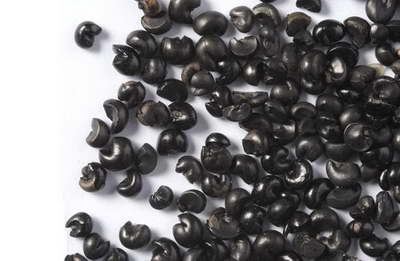

Cordilina seeds photo
Reproduction is possible by seed and vegetative (by dividing the root, apical and stem cuttings).
Seed propagation is extremely rare, mainly for breeding purposes. When seed propagation from home seeds, plants lose varietal characteristics.
- Spread the seeds over the surface of the soil, use a mixture of turf and sand.
- You can plant one seed at a time in cassette cups.
- Cover crops with foil, periodically ventilate, water. Seedlings will be uneven: the first will appear in 1 month, the last in 3.
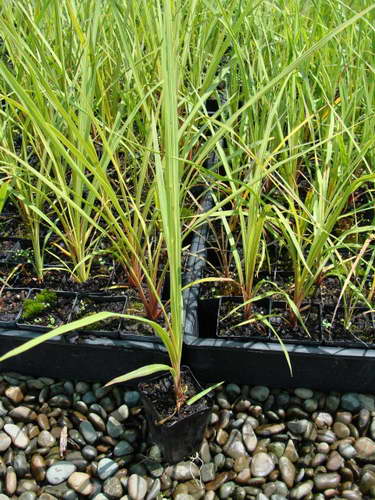

Cordilina from seeds photo
If sown in a common container, split the plants into separate containers as soon as they grow up to 5-7 cm in height. Proceed with caution to keep the roots and an earthy ball around them. You can use any metal or wooden object, such as a fork, the back of a spoon, a toothpick, instead of a "spatula", to transfer the plant at the root to a new cup.
The transplanted plants will be slightly stunted, but after a couple of weeks, the roots will recover and the seedlings will continue to grow. Grown seedlings are planted by transferring them into permanent pots.
Diseases and pests
Despite the fact that the plant has a strong immunity to diseases and pests, with improper care, they can still appear:
- Shields - enemy number 1, with whom it is not so easy to fight. The body of insects is covered with a chitinous layer, so you should not even try to destroy pests with insecticides. A drug is needed that is absorbed in the part of the plant, but before processing, the scabbards should be removed with a cotton pad dipped in a solution of laundry soap. The appearance of the parasite is indicated by red spots that appear on the surface of the leaves.
- Whitefly - small white insects that damage the lower part of the leaves by sucking out the juice. The tip also suffers. With the invasion of pests, the leaves lose their decorative effect, dry, wither. One chemical treatment is enough for destruction.
Many people think that in order to get rid of the whitefly, you need to process the plant 3 times with an interval of 7 days. Do not poison yourself and the plant! One treatment is enough. If a whitefly appears on the cordiline, then only from the fact that it penetrates the house through the window or it can be brought along with street flowers.
Cordilina is an unpretentious flower that is not afraid of any diseases. The only thing that a flower can get sick with is root rot, which develops if watering rules are not followed. If you notice a problem in time, you need to remove the plant from the pot, dry the soil, shake it off the roots and conduct an inspection, as a result of which all decayed parts are cut off. Places of cuts should be sprinkled with charcoal. Transplant the treated plant into a new substrate, but do not immediately need to water. It is necessary that it gets used to new conditions of detention for 2 days.
How to propagate cordilina by dividing the rhizome
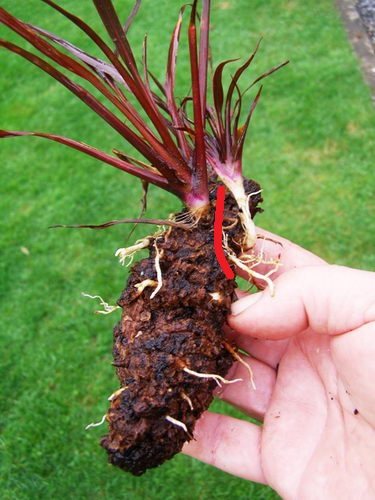

How to divide the rhizome of cordilina photo
The division of the rhizome is carried out during transplantation. Remove the plant from the pot, rinse the roots and cut into pieces with a disinfected knife, treat the sections with a phytosporin solution. Root in a lightweight substrate. For a successful rooting process, cover the pot with plantings with a bag, ventilate regularly.In a month, new roots will appear and the delenki may well be considered independent bushes.
Photo gallery
It has a stiff, prone to bare trunk and fleshy, creeping, knotty roots.
Cordilina is often confused with dracaena, they differ in the root system: dracaena roots are straight and yellow, and in cordilina they are white and curved. The cordilina also has leaf petioles and a central vein.
Reference! The plant is harmless to humans and pets.
Signs and superstitions
It is believed that cordilina has a beneficial effect on the atmosphere in the house. It also brings good luck and helps to unleash a person's creative abilities.
We also recommend other articles on the site about decorative deciduous plants, for example about: rivina, aglaonema, drimiopsis.
Red
The plant was also born in Australia. In nature, it grows in the form of shrubs 3-4 m in height, often not divided into branches. The sprouts reach a thickness of 0.6-2.5 cm.
The leaves are lanceolate, 30-50 cm long and 3.5-4.5 cm wide, oval, leathery, dark green on both sides, as well as a combination of red and burgundy stripes, veins are clearly visible.
The petiole is grooved, extended by 10-15 cm. It dissolves purple flowers in summer. It also bears bright red fruits with a diameter of about 10 mm.
Did you know? For the first time, the red cordilina was described by the German biologist Karl Friedrich Otto. The specific name comes from the Latin word "ruber", which means red.
This plant accepts well being in cool, lighted rooms. In summer, it is recommended to take out to fresh air. The ideal temperature for keeping in winter is 6-8 ° C. It is also important to provide a moist soil. Cordilina red is quite persistent, so it can do without proper care for several days.
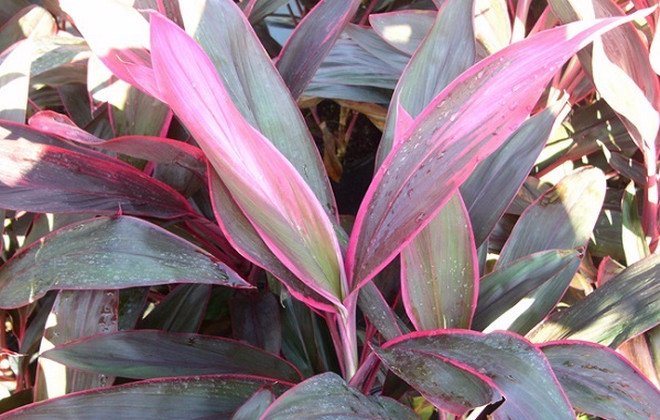

It can be propagated both by seeds and cuttings.
Is bonsai suitable for formation?
To shorten, rejuvenate and give the cordiline a bonsai look, as well as stimulate the lateral buds, pruning will be required:
- cut off the top with a sharp knife, which can later be rooted;
- sprinkle the cut site with activated carbon or wood ash;
- put the plant in a place with bright diffused lighting;
- periodically rotate relative to the light source so that new shoots form a beautiful tree.
You can enhance the decorative appearance of the cordilina if you cut the stems at different levels.
Expert opinion
Mokhov Andrey Petrovich
Graduated from KubSAU specialty: agronomy
You can only cut a healthy flower of at least 30 cm.
Transfer
A young plant should be replanted annually, an adult once every 2-3 years. The best time for transplanting is spring, but you can perform the procedure at other times of the year. This is necessary if:
- the root system has grown, and the flowerpot has become small;
- the soil is waterlogged and there is a risk of root rot;
- pests have bred in the soil;
- the top layer of the soil was covered with a white crust - salt deposits.
When it comes to transplanting a healthy plant, it is better to use the transshipment method - the most gentle way, in which the earthen lump remains unchanged.
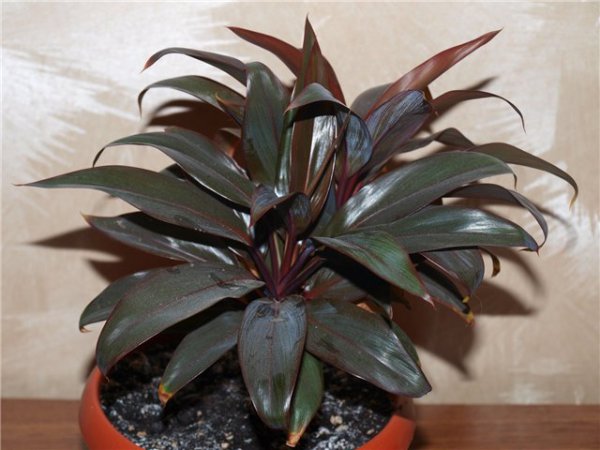

Transshipment:
- a few days before transplanting, stop watering the plant;
- prepare drainage, soil and flowerpot 2-3 cm larger than the previous one;
- pour a 3 cm thick drainage layer and soil on the bottom of the pot;
- remove cordilina from an old flowerpot;
- put the plant along with the old earthy clod in the center of the new container;
- fill the voids with new soil, slightly compacting, but not tamping it.
If the transplant is carried out due to disease or pests, a complete replacement of the substrate is necessary. After transplanting, water the plant abundantly and place it in a shaded place at a temperature of + 20-22 ° C.
In the next 2 weeks, moderate watering and occasional spraying are required.
Expert opinion
Mokhov Andrey Petrovich
Graduated from KubSAU specialty: agronomy
Cordilina can be grown hydroponically.
Conditions for growing at home
For tropical and subtropical species, the conditions of detention are different. What they have in common is a love of moderate humidity, good illumination, intolerance to temperature jumps and drafts.
Did you know? The southern cordilina, which grows in New Zealand, is used by locals for making ropes and textiles, as well as for eating. The juice from the leaves is used to prevent and treat infections.
Lighting
The plant needs bright light, so it is placed in an illuminated place. In summer, the flower grows well by the window on the east or west side. In winter - from the south side. The sun's rays should not be direct, they need to be scattered. Cordilins with dark leaves are able to maintain decorativeness in not too lit corners of the house.
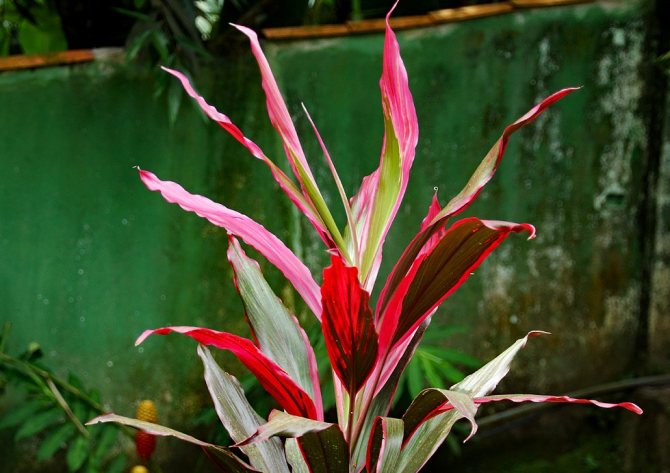

Airing
Temperature drops are harmful for cordilin. Therefore, when ventilating, make sure that there are no drafts in the room. Their effect can adversely affect the decorative effect of the flower. If it is necessary to ventilate the room where the flower is contained, it is transferred to another room during the procedure.
Temperature regime
In the warm season, the plant develops at a temperature of + 20 ... + 25 ° С, in winter - + 5 ... + 10 ° С. For subtropical species, the temperature decrease from autumn is carried out gradually. Tropical species love warm ambient temperatures. In winter, they need to organize a temperature regime of + 18 ... + 20 ° С.
Banks
Found in forests around New Zealand. It has a slender, straight trunk, 1.5-3 m high. The leaves are elongated-lanceolate (60-150 cm), pointed, straightened upward, collected in dense bunches.
The top of the leaf is colored green, the bottom is gray-green with clearly visible veins. The petiole is about 15-20 cm long. The flowers are white, placed on small stalks, often without pedicels at all.
This species is highly adaptable, so different living conditions can be created. In the warm period, it is good to leave it in clean air, in the winter - cool, sufficiently lit rooms. The optimum temperature is 6-8 ° C.
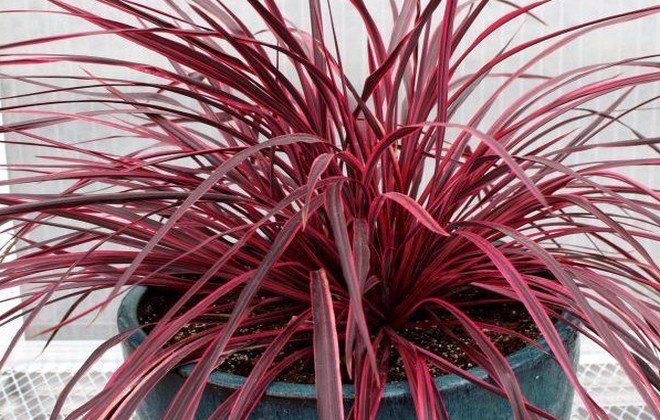

Soil preparation
After purchasing a plant, it must be transplanted immediately. Further, this procedure should be carried out once a year. It is enough to replant more mature flowers once every three years, but the topsoil must still be renewed every year. Drainage is required in both cases.
As a soil, you can use a nutritious slightly acidic soil. The acidity level in this case should be at pH6. Such soil can be bought ready-made in any flower shop, or you can prepare it yourself. In the second case, you will need the following components:
- 1 part peat;
- 1 part sand;
- 1 piece of leafy land;
- 1 part of peat land;
- 1 part of humus;
- 3 pieces of garden land.
In addition, you can use a regular peat or clay soil mixture.
What kind of soil is needed?
The soil should be light, nutritious, permeable to air and moisture, and have neutral or weak acidity (pH 6.0–6.5). You can buy ready-made soil for palm trees or prepare it yourself by mixing in equal proportions:
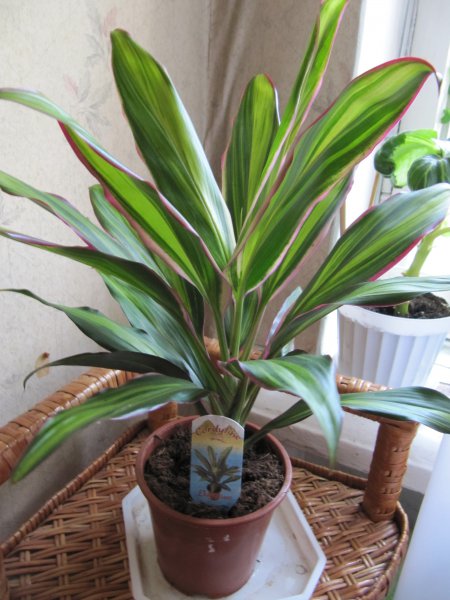

- sod land;
- leafy ground;
- coarse sand;
- rotted manure.
Activated or charcoal can be added to the resulting soil mixture to protect the roots from decay and brick chips to enhance looseness.
To destroy fungi, parasites and microorganisms, the soil must be calcined, steamed or treated with a manganese solution.
Kiwi
Homeland - North Australia. In the natural environment, it can grow up to 2-3 meters, and with home maintenance - 1-1.5 m. The leaves are hard, have roundish edges, combine dark green, pink and yellow tones, connecting in different patterns.
It is distinguished from other species by wider sheets, which die off over time, opening the trunks.On the sides, new shoots are continuously formed, suitable for transplanting.
Inflorescences are paniculate, generously covered with small white buds. However, when kept at home, it practically does not bloom.
Did you know? The name of the plant comes from the Greek word kordyle and translates as knot. So scientists noted the specificity of the roots - a kind of knotty thickenings.
Cordilina kiwi is an undemanding plant, so it is quite easy to keep it indoors. Does not feel the need for high humidity or high temperature. There is no rest period, it does not lose its brilliance for a whole year.


Views
The genus Cordilin includes various types of plants - about 20 in total. They have green or variegated leaves - with pink, red or cream strokes or spots. The most popular among plant breeders are the following varieties:
- Cordilina straight - a plant with wide leaves, characterized by a matte surface, the height of which ranges from 1.4 to 2 m.
- Cordilina kiwi is a shrub with luxurious green foliage, often framed by a burgundy border.
- Cordilina fruticosis - a species that grows extremely slowly and does not lose its lower leaves for a long time, numerous varieties of which are distinguished by the most varied colors.
- Southern cordilina - a tree with a thick trunk at the base and long, up to 1 m, narrow and hard leaves, a bunch of which is located at the top of the plant.
- Cordilina mix - a common name used for batches of seedlings of various types and varieties.
- Apical cordilina - a plant with large, up to 80 cm long, green leaves, variegated with red or pink marks and located at the top of the shoot, with a woody stem, which branches or not, with pink or white flowers and a great love of sunlight.
- Cordelin undivided - a tree with narrow leaves up to 1 m long at the base, often decorated with a crimson border and an orange central vein, as well as gray-gray on the underside.
The photo shows the indoor flower of Cordilin:
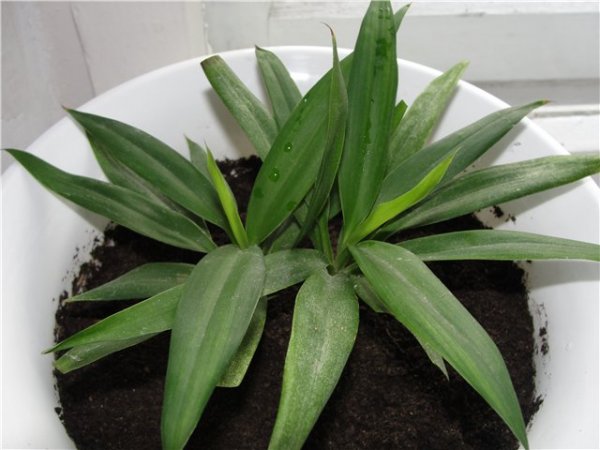

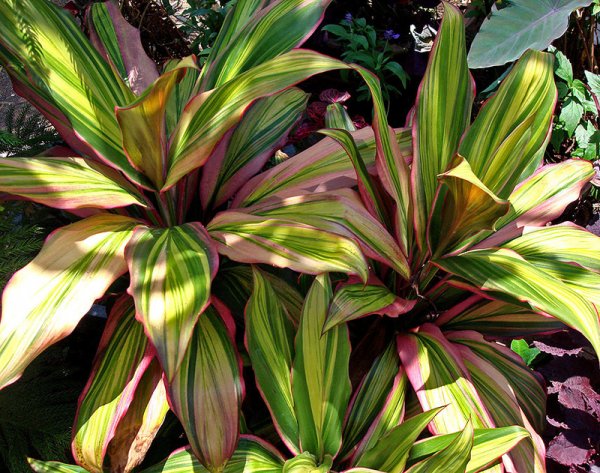

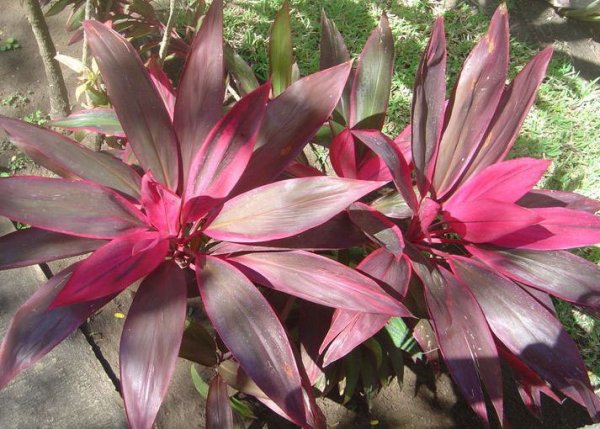

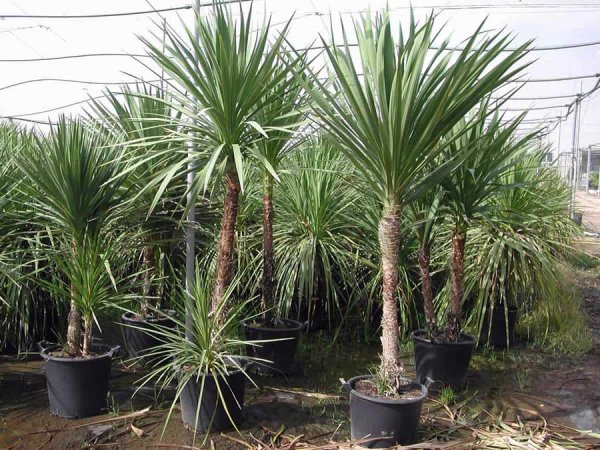

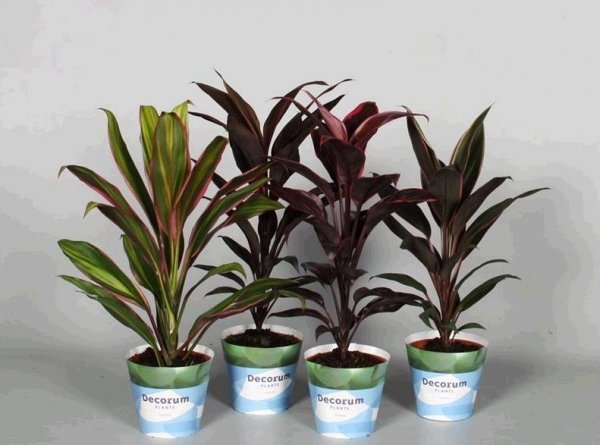

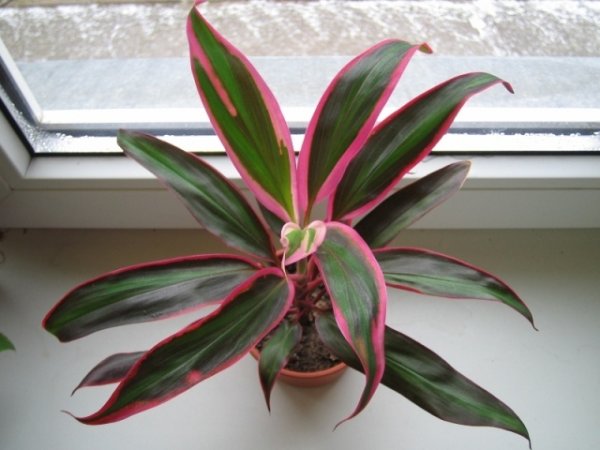

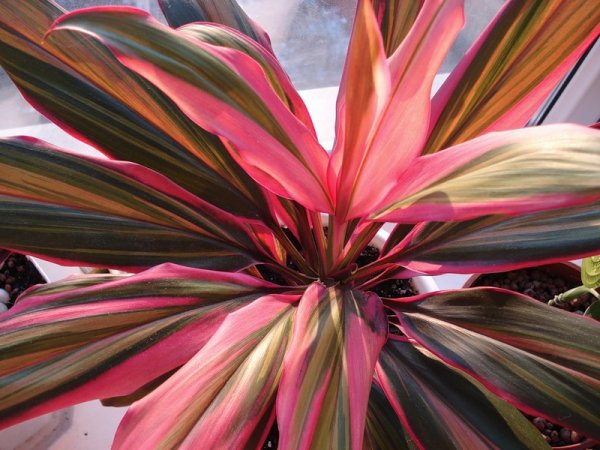

Difficulties in growing
When growing a plant, you can face the following problems:
- Light spots on foliage. The reason lies in the excess of sunlight. Move the pot to a shaded place or cover the flower from the sun's rays.
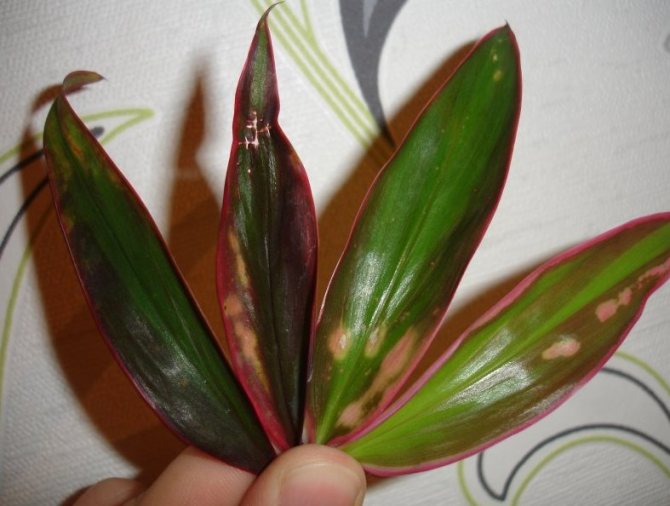

- Drying and brown coloring of the tips of the leaves. There may be several reasons why the leaves of the cordilina dry. One of them is dry air in the room. Another is insufficient moisture. It is necessary to regularly spray the plant and establish a watering regime.
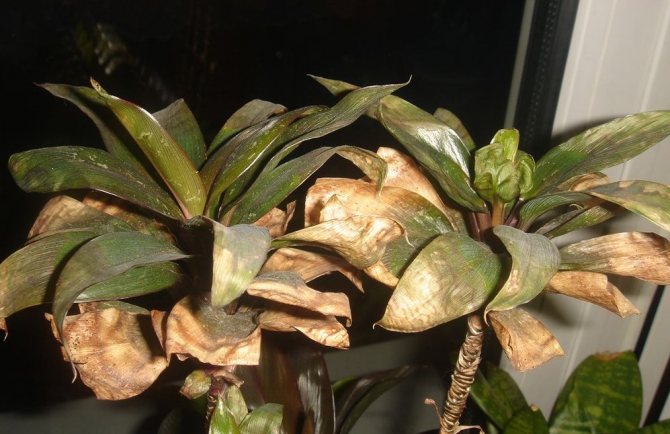

- Brown spots on the leaves. One of the reasons for the development of the problem is a lack of moisture. To eliminate it, you need regular hydration.
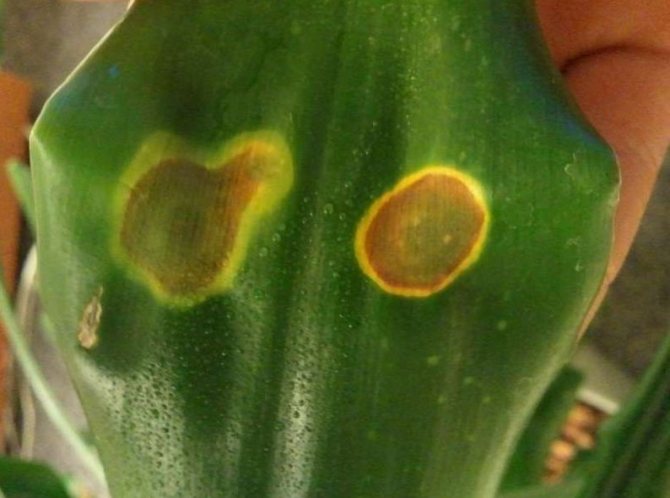

- Rotting of the stem from below. This is due to waterlogging. It is necessary to stop watering and establish their correct regime. The plant must be transplanted into new soil, carefully examining the roots and cutting off the affected areas.
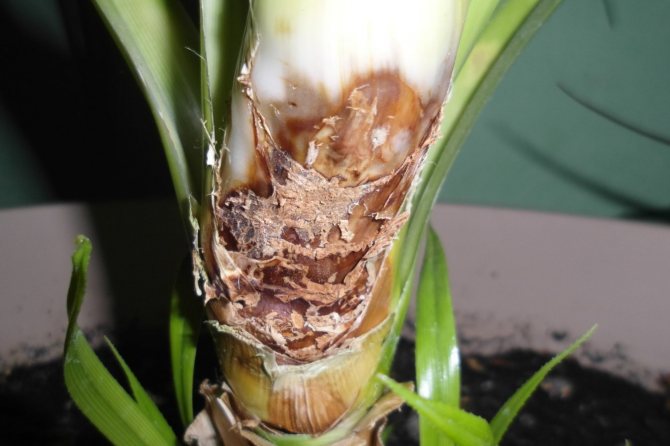

- Leaf fall of the lower leaves. Leaves from the lower tier will fall off constantly - this is a natural process. However, if the leaf fall is strong, then you need to pay attention to the location of the pot with cordilina. Perhaps she lacks light and needs to be placed in a brighter place.
- Curling and softening the leaves. Most likely, this is how the plant reacts to cold. It is necessary to raise the room temperature or move it to warmer conditions.
- Yellowing of foliage. It happens for two reasons: a lack of nutrients and a low level of air humidity. It is necessary to start spraying the plant and fertilizing it.
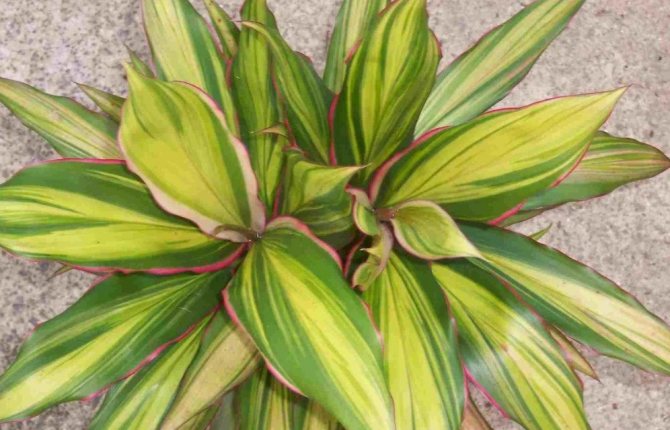

Also, if the grower makes mistakes during planting or leaving, the flower may get sick or be invaded by harmful insects.
Diseases
Of diseases often occurs root rot. Signs of the disease: unhealthy appearance of the plant, stunting, drying out of the leaves.The factors that provoke the disease are excessive watering and cold. Treatment consists in pruning diseased roots, rinsing healthy roots with hot water, treating cut sites with activated charcoal, fungicide approved for indoor plants. After drying for a day, the plant is transplanted into a new pot and soil. With strong decay of the roots of the plant, the top is cut off, rooted and planted in a new container and soil.
You will be interested to know how to properly plant indoor flowers in a pot.
Pests
The following can settle on the cordilina:
- Mealybug. Leaves a characteristic symptom - white loose discharge, similar to cotton wool. They struggle with it by wiping with soapy water, spraying with a solution of green soap, infusions of tobacco, garlic, decoction of cyclamen, tincture of calendula, alcohol, drugs "Aktara", "Biotlin", "Calypso", "Confidor", "Fitoverm".
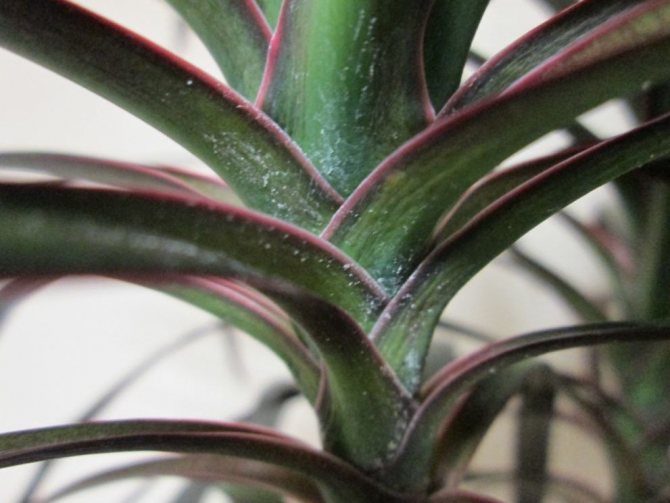

- Spider mite. The presence of cobwebs on the thorns and the stem, as well as small red dots, will tell that the plant has chosen a tick. This parasite loves heat and dryness. To get rid of it, you need to wipe the flower with soapy water. In case of severe infection, treatments are needed by means of Fitoverm, Bi-58, Karate, Iskra-M, Aktellik.
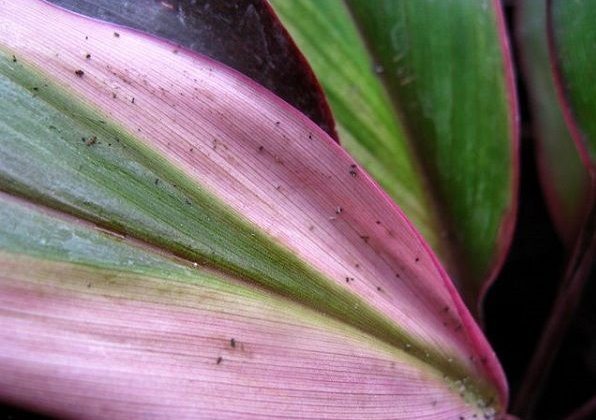

- Shield. It's easy to spot. This small insect is covered with a hard shell. It feeds on flower juices. The first symptoms of the appearance of a scale insect are a sticky liquid on the trunk. Destroy it mechanically - scraping with a brush. Also effective are vinegar rubdowns, rubbing with a tincture of garlic, red pepper. In case of severe infection, they resort to chemical treatment using Fitoverm, Aktellik, Metaphos.
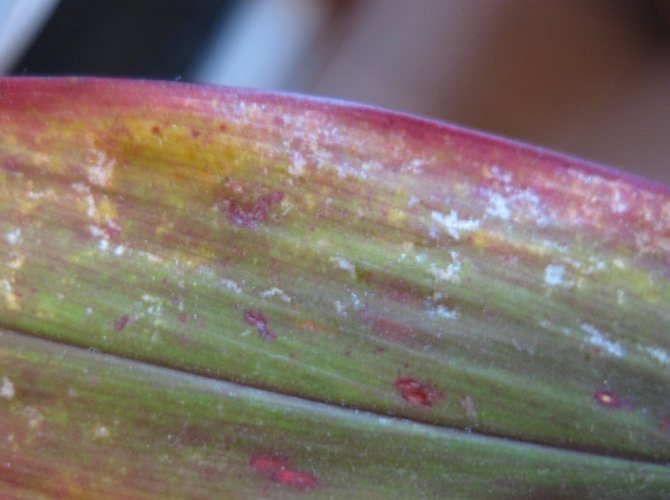

- Whitefly. Moths with white wings. The danger is not butterflies, but their larvae, which feed on leaves. As a result, they turn yellow and curl. To combat whitefly, the above insecticides are used. Soap solution, infusions of tobacco and dandelion also help scare off the insect.
